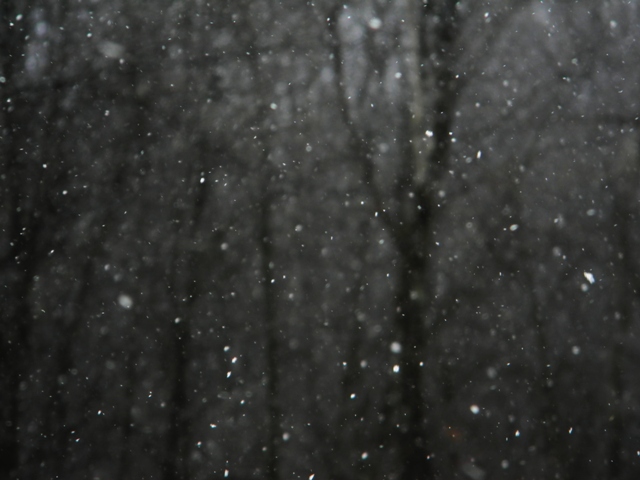
Photo by MARTINA K magdeleine.co (CC0 – PUBLIC DOMAIN)
I was saddened to read about 61-year-old hiker, Hua Davis. She was hiking around MacNaughton Mountain (3,983 feet) in Lake Placid, New York.
New York State Forest Rangers and State Police began searching for her Saturday morning, after she did not return to her hiking party Friday evening. They found her body at 4:00 pm Saturday near MacNaughton Mountain.
The Rescuers’ Tale
The Lake Placid News reports:
Even though she was an avid and well-versed hiker, a 61-year-old woman who died of hypothermia in the High Peaks over the weekend was ill prepared for a winter hike, according to the coroner who handled the case.
Hua Davis perished from hypothermia due to exposure, according to Essex County Coroner Frank Whitelaw. State forest rangers found her Saturday afternoon on MacNaughton Mountain in the High Peaks Wilderness.
“She was not dressed properly. As far as her footwear, she was only wearing a pair of Skechers sneakers,” Whitelaw said by phone Monday morning. “She had some gaiters on, but she was wearing draw-string fleece sweatpants, and that was it. And once you get them wet, that’s it; you’re wet.”
“Her upper garments would have been adequate if they hadn’t gotten wet, but they were soaked through.”
Whitelaw said Davis was of a very small stature, being just over 5 feet tall and weighing around 100 pounds.
“Of course hypothermia is going to set in much quicker when it’s a smaller person,” he said.
Whitelaw did note that Davis was very physically fit.
He added that “she was not carrying any emergency gear: no space blanket or anything like that, no decent fire-starting material or anything.”
“There was evidence at the scene that she attempted to use her fleece gloves as fuel for a fire. That was unsuccessful.”
What it was described to me was that rangers just merely followed her path as she went down the back side,” of the mountain, Whitelaw said. “They found that at some point her trail became extremely erratic, which is consistent with the deliriousness caused by hypothermia.”
“And then she eventually just sat down against a tree and just went to sleep, and that was it.”
Hypothermia – The Silent Killer
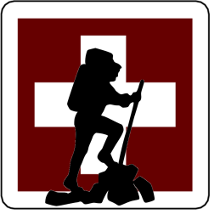 In my role as a nature interpreter and instructor, many people ask me about mountain lions. They quake in fear at the thought of hiking in lion country. But if you do a risk assessment, mountain lion attacks should be low on your list. Falls, hypothermia and getting lost pose much greater risks than does an animal attack.
In my role as a nature interpreter and instructor, many people ask me about mountain lions. They quake in fear at the thought of hiking in lion country. But if you do a risk assessment, mountain lion attacks should be low on your list. Falls, hypothermia and getting lost pose much greater risks than does an animal attack.
Until recently, hypothermia was the leading killer of hikers in the outdoors. Falls recently surpassed hypothermia. But I suspect the increased popularity of rock climbing and mountain biking skew these numbers. I also believe that many falls each year are precipitated by hypothermia.
If you venture into the outdoors, learn to recognize the symptoms of hypothermia and know what to do when it strikes. I call hypothermia the “silent killer” because it can be difficult to recognize before it becomes serious.
You may think you are immune because you do not hike in the snow. Think again! Hypothermia is most commonly seen when outside temperatures are in the 40s and 50s (4.4 – 15 degrees celsius). These temperatures create the deadly mixture of cold and wet (rain).
Signs and Symptoms of Hypothermia
I use a simple approach to recognize hypothermia. If the environment is cold and wet, I look for the following symptoms. These roughly correspond to drops in body core temperature.
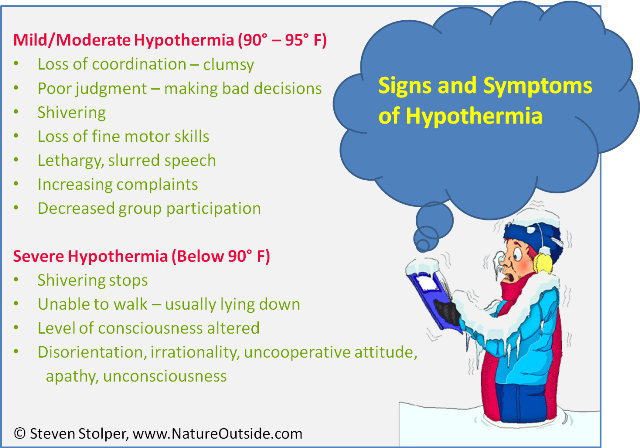
Signs and symptoms of Hypothermia
I go out of my way to engage hikers in conversation – periodically checking their level of consciousness and energy. If I see body language that says, “I’m cold,” I act before it becomes a serious situation.
Treating Hypothermia
Warming someone in the field can be very difficult. And it may be impossible for you to warm someone whose core body temperature has fallen too low. It is far better to avoid hypothermia than be forced to treat it. But here are some tips you can use to treat hypothermia.
Treating Mild/Moderate Hypothermia
 After you confirm the symptoms, act decisively to treat mild hypothermia. Stop the patient from getting any colder and raise his or her core body temperature. Here are some tips.
After you confirm the symptoms, act decisively to treat mild hypothermia. Stop the patient from getting any colder and raise his or her core body temperature. Here are some tips.
- Remove patient from the cold environment or limit further exposure
- Remove wet clothing and replace with dry clothing
- Move to shelter to protect from wind and cold
- Insulate patient from ground
- Give warm (not hot!) sweet liquids
- Have patient begin to eat
- Keep patient moving after initial treatment
You can warm a mild hypothermia patient using external heat sources. But be careful! Do it gently. Avoid burning patients’ skin by putting hot objects against them. Mild hypothermia can lower patients’ mental acuity. So they may not realize they are being burned. It is up to you to look out for them.
- Chemical heat packs
- Hot water bottles (Do not place directly on skin!)
- Skin to skin contact (snuggling) with warm, dry rescuers
- Place patient by a fire
I have warmed mild hypothermia patients by placing them in their tent. I put them into their sleeping bag along with a Nalgene bottle filled with hot water (previously boiled on stove or fire). I wrap the bottle in fleece or heavy cotton so there is no direct contact with the skin. I monitor the patient regularly to ensure he is not being burned. I check that the bottle is still hot and the patient’s level of consciousness and energy is increasing.
Treating Severe Hypothermia
Severe hypothermia is another matter! It is extremely difficult to re-warm a patient in the field. I have never encountered severe hypothermia and I hope I never do!
If a patient stops shivering, he has lost the ability to raise his body temperature. This is a serious situation! The best we can do is to be very gentle when moving the patient, prevent further heat loss, and get help! This requires urgent evacuation by professionals to a hospital.
Here are some tips from my wilderness first aid training:
- Handle patient gently. Rough handling can stop the heart!
- Rescue breathing is recommended (or oxygen). Use 5-15 minutes of rescue breathing if you are forced to move the patient.
- Remove wet clothing (be gentle!) and bundle the patient in as much dry insulation as possible.
- Insulate patient from the ground.
- DO NOT rub extremities.
- Help trap heat using a vapor barrier around the patient: plastic, tarp, or tent fly.
- Place in a pre-warmed sleeping bag. If evacuation will be delayed, add warm water bottles near the patients’ torso or have a rescuer snuggle in the bag. Make sure the rescuer does not become hypothermic!
- DO NOT place patient near external heat source (like a fire) until he/she is fully wrapped.
- Monitor patient’s airway, breathing, and circulation. It will be low.
- Get help ASAP! This situation needs a gentle evacuation, done by professionals, to get the patient to the hospital for warming.
- Treat for severe hypothermia even if the patient appears to be dead. No one is dead unless they are warm and dead!
Severe hypothermia is deadly. So never let it get to this stage.
Preventing Hypothermia
As I mentioned, it is better to avoid hypothermia than be forced to treat it. Here are some tips to prevent hypothermia on your next outing:
- Wear layers of clothing. If you are expending energy, remove a layer before you start to sweat. When you stop to rest, add layers before you feel a chill.
- Drink lots of water.
- Eat a lot of food, especially carbohydrates.
- Prevent overexertion. Rest often.
- In a group, watch for early signs of hypothermia. If you treat one person, treat everyone in the group.
Your Equipment and Your Margin of Safety
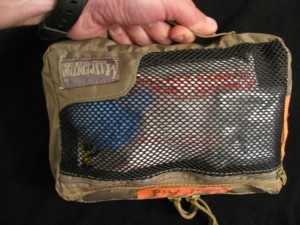 Articles and commentators covering the search for Hua Davis made a poignant observation. She was an ultralight backpacker. An ultralight backpacker usually carries 10 pounds or less of equipment. The goal is to enjoy backpacking by carrying less weight and hiking farther.
Articles and commentators covering the search for Hua Davis made a poignant observation. She was an ultralight backpacker. An ultralight backpacker usually carries 10 pounds or less of equipment. The goal is to enjoy backpacking by carrying less weight and hiking farther.
But there is a lesson to be learned here.
The Essex County Coroner stated, “She was not dressed properly. “ He added that, “she was not carrying any emergency gear: no space blanket or anything like that, no decent fire-starting material or anything.”
It is tempting to shed gear to lighten your pack weight. But most of us spend our lives in offices in urban areas. We don’t have the skills and knowledge our ancestors had to survive in harsh outdoor environments. The clothing and equipment we carry into the woods are our only resources to fall back on if something goes wrong.
The ability to keep yourself warm and dry is fundamental to your safety in the wilderness. When you compromise these, you put yourself at risk. This is especially true in cold, wet, winter conditions. There is a bushcraft aphorism:
There is no such thing as bad weather, just bad clothing.
I hike with a heavier load in winter to accommodate the extra clothing I need to enjoy the outdoors safely. I urge you to do the same.
This websites is about bushcraft. Bushcraft is the practical knowledge of our natural world. Bushcraft skills provide shelter, water, fire and food from materials found in our natural environment. A tenant of buschraft is, “The more you know the less you carry.” But make no mistake – Do not compromise on equipment that can save your life. Bushcraft always demands that you carry enough to provide for your safety.
Another important lesson is that hypothermia kills. Mental acuity is one of the first casualties of hypothermia. So act proactively before the situation degrades. Act while you and your companions are thinking clearly.
Be Safe, Be Proactive
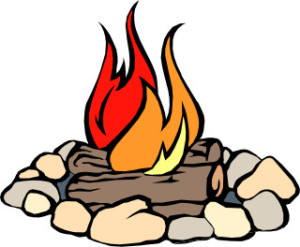 Please be safe. Carry the proper clothing and equipment to enjoy the outdoors with the proper level of safety. Please learn to recognize hypothermia and act proactively. Prevent the situation from getting worse. You have a duty of care to yourself and those who love you to return safely to their arms after your trip to the woods.
Please be safe. Carry the proper clothing and equipment to enjoy the outdoors with the proper level of safety. Please learn to recognize hypothermia and act proactively. Prevent the situation from getting worse. You have a duty of care to yourself and those who love you to return safely to their arms after your trip to the woods.
Additional Information
This is where I received my Wilderness First Aid training
More information on hypothermia
Other First Aid Posts on NatureOutside
Wilderness First Aid and the Duty of Care to Yourself
Maxpedition Individual First Aid Pouch
My Most Popular First Aid Supply of the Year 2015
Survivor: “I Never Want To Be This Cold Again”
For fun facts and useful tips, join the free Bushcraft Newsletter.



Hello.
I am from Malaysia and would like to know if you have any program for outdoor people. I am interested and would to attend any program during my visit to USA.
Ravichandran, I run dayhikes and outdoor workshops each month. You can find my schedule at https://www.natureoutside.com/upcoming-events/
Usually events are posted one month in advance. If you know when you will be visiting, send me Email and I will let you know what is coming up. Also, I may be able to suggest other programs in the US that may interest you.